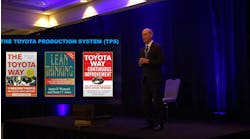This excerpt is adapted from the new book Profit from the Source:Transforming Your Business by Putting Suppliers at the Core by Christian Schuh, Wolfgang Schnellbächer, Alenka Triplat and Daniel Weise. Copyright 2022, The Boston Consulting Group Inc. Reprinted by permission of Harvard Business Review Press. All rights reserved.
The story of Jack Smith is instructive for any business leader. He was given the daunting responsibility of delivering the turnarounds of GM Europe, and then of GM North America, and then of the entire company, and he delivered, every time. This was because he turned to what he called his secret weapon: the CPO and the procurement function.
Although Smith was not a procurement specialist, he understood the value that the function could offer, and he was ready to cultivate a new corporate mindset and give the CPO a seat at the table and a wide mandate for change.
Of course, nearly 30 years on, the world has changed, and CEOs cannot expect to have the same impact simply by reprising Smith’s actions. He was narrowly focused on the bottom line and cutting costs, whereas today a sophisticated procurement capability can be used to deliver top-line growth. But by drawing inspiration from GM’s former CEO and elevating the role of the CPO, today’s CEOs can have a transformative effect on their companies.
Cultivate a New Corporate Mindset
In the vast majority of companies, suppliers are a second thought and procurement is a back-office function with little or no strategic involvement. If this is to change, as we think it must, then companies will need to start viewing them both very differently—and the only way to change perceptions is for the CEO to take personal responsibility for cultivating a new corporate mindset. But how, exactly, should CEOs achieve this? By leading from the front and taking very tangible, visible actions at an individual and institutional level.
At an individual level, CEOs should start spending about 25% of their time thinking about suppliers and participating in procurement activities. In practical terms, this means that they should allocate part of each day to nurturing personal relationships with the CEOs of their companies’ top suppliers and meeting the leaders of companies that are not yet on their roster of approved suppliers but that show some promise of strategic potential. Also, they should get to know the CPO and the other procurement professionals—their work, their preoccupations, their passions. It is striking that Jack Smith went out of his way to meet and spend time with Ignacio López, who at the time was a little-known industrial engineer working far from the main centers of GM activity.
At an institutional level, CEOs should consider making suppliers—and by extension the procurement function—one of the top agenda items at board meetings on a regular basis. (This will send a clear message to the rest of the executive team.) The CPO should be invited to join the CEO’s inner circle so that they can contribute to and be consulted on the strategic direction of the company. In many companies, the CPO is an administrative figure, reporting to someone in the senior executive team. This makes little sense. By cutting the CPO out of the high-level strategic conversation, companies risk squandering valuable commercial intelligence that comes from their relationship with suppliers—in particular, news about competitors’ current and future products, information about up-to-the-minute trends and the latest thinking on faster, better and safer ways to source and make products.
Again, it is striking that Smith gave López an important role on the strategy board of GM’s North American business. Smith rightly understood that if it is to be effective, the procurement department needs to be transformed from an instruction-taking to a decision-making function. Moreover, after López’s departure, he appointed someone—Rick Wagoner—who could, and eventually did, succeed him in the top job. This is critical. If CPOs are to merit a place in the CEO’s inner circle, they must be powerful corporate figures in their own right, people who can command the respect of their fellow executives. They may or may not have previous procurement experience, but they must certainly have the personality to challenge the status quo, foster disruptive thinking, deliver radical change and one day run the whole company.
We often recommend that to underscore the CPO’s authority, CEOs should make them a direct report, as Smith did with López. Also, if possible, they should consider installing the CPO in an office next to or near their own. You can tell a lot about CEOs by looking at the company they keep and the people they keep close by their side.
Christian Schuh and Daniel Weise are managing directors and senior partners, Boston Consulting Group (BCG). Wolfgang Schnellbächer and Alenka Triplat are managing directors and partners at BCG.




